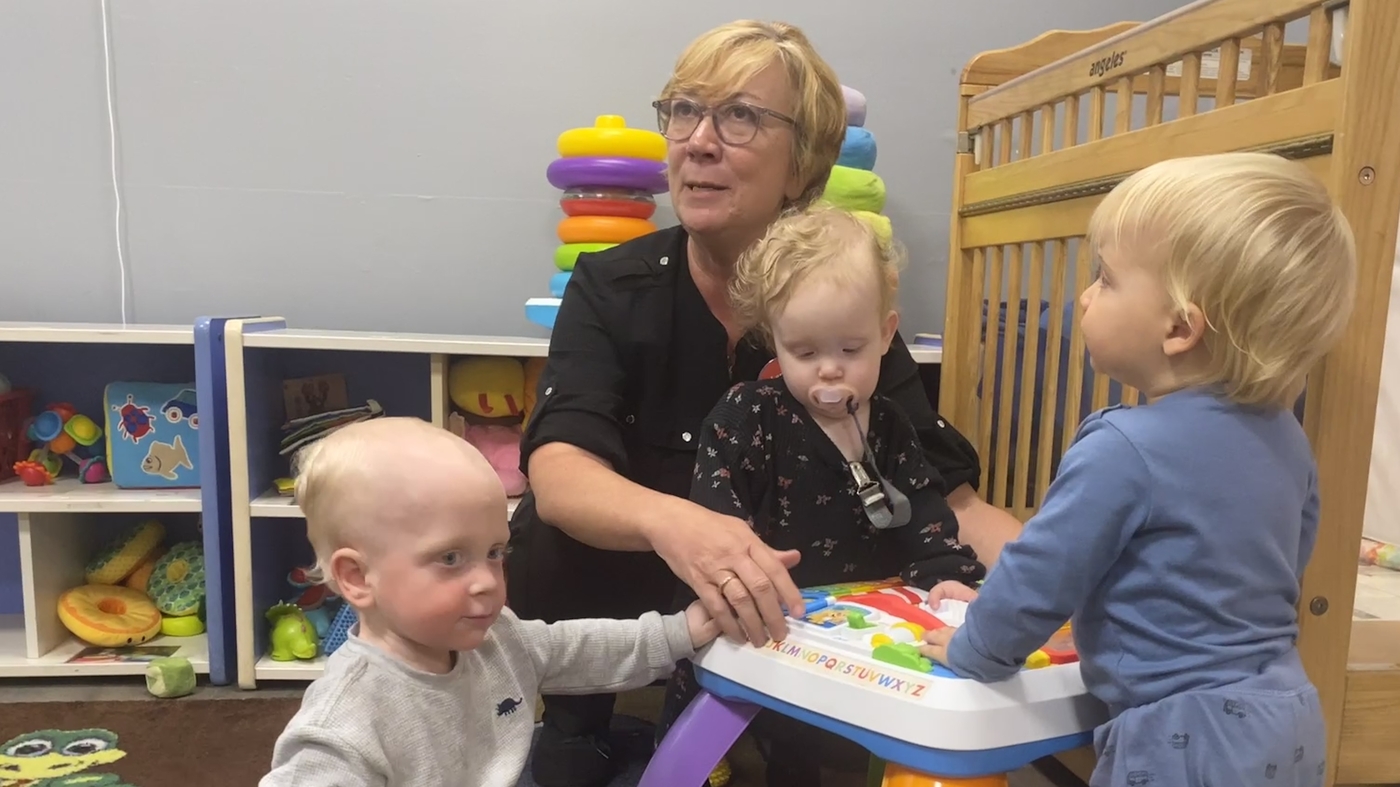
Child care centers are being forced to make difficult cuts due to the lack of relief money
She’s Going Through a Hard Times: The Impact of Pandemic Relief on Child Care Providers and Home-Based Daycare Centers
She’s afraid the same is true again, after all the talk about child care being important not just for families, but for the economy.
As part of the 2021 American Rescue Plan, Congress approved a total of $39 billion for child care, an unprecedented level of spending aimed at ensuring essential workers could go to work. The majority — $24 billion — was directed toward stabilizing child care centers and home-based daycares, to guarantee they’d remain open and staffed.
Colagrosso spent money on wages and bonuses, repairs and a new heating and cooling system, as well as a bus to take older children to school and back in the summers, when there was an empty field.
Now that the September 30 deadline for spending the pandemic funds has passed, she and other child care providers are grappling with what they have to take back.
In addition to curbing bonuses, she has ended paid sick leave for part-time staff and says she will end it for full-time staff soon. She’s eliminated a floating position, someone to help out wherever extra help was needed.
It’s been difficult to run her center in a rural part of West Virginia. Colagrosso did not make payroll for many months, and had to go to the bank to get a loan.
Close to three-quarters of the families she serves fall below 85% of West Virginia’s median income, qualifying them for state subsidies. Those with several young children can’t afford full tuition. They worry that with pandemic relief funds gone, Colagrosso may have to raise her rates.
“We’d either have to work part-time — one of us — or one of us quit our job, which we can’t really do,” says Brittany Smith, a civil engineer. She and her husband have one-year-old twins and a 12-year old.
The pandemic bonuses proved life-changing for teachers including Destiny Vansickle, who saved enough money for a down payment on a two-bedroom house next to her sister — a “forever home” for her infant and her 4-year-old.
She says that having a place of their own and a yard for their kids to play in has been great.
Tena Gee, who’s worked at A Place to Grow for 13 years, says the bonuses allowed her to give her 9- and 12-year-old daughters Christmas for the first time — new bikes, new kayaks, a baby doll with its own bassinet.
She says that she was able to afford her bills because of the extra money. “It felt like the work I was doing was finally being acknowledged. I feel like my pay is in line with the hard work I put in.
Child Care Stabilization Funding Has risen Since the Pandemic Left: An Insight from State Senator Sarah Colagrosso
Senate Democrats have introduced a bill to extend child care stabilization funding for five years, but the measure doesn’t have support from Republicans.
Colagrosso says she used to think there was a lack of understanding among elected leaders about the value of child care — a lack of understanding that without affordable options, people can’t go to work.
I thought that they understood all along, after the epidemic hit and the money came. They understood. They just didn’t prioritize it,'” she says.
That is a wonderful incentive, says the owner of iKids Childhood Enrichment Center. “Any of my teachers who have children — they can work for me, and their children are paid for by the state.”
The idea emerged after the state saw a sharp drop in the number of children accessing child care subsidies in the pandemic — from roughly 30,000 to just 17,000 children.
Sarah Vanover, who was then director of Kentucky’s Division of Child Care, says that remained true even after the state raised the income eligibility threshold, making many more families eligible for subsidized care.
After a flurry of calls to child care centers, Vanover concluded there was no lack of need. In fact, many parents were desperate to get their kids into daycare so they could return to work. They couldn’t find any open spots.
In the pandemic, competition for workers intensified. The local Target started paying $17 an hour. The starting wage at Domino’s was $15 an hour. Child care in Kentucky costs around $12 an hour.
“So if you’re thinking about doing a very labor intensive job and making very little money, or if you’re going to Target and make $5 an hour more, then it’s not a contest for working parents.”
Kentucky made day care free for child care workers through a change in licensing regulations. A year later, the number of children receiving state subsidies for child care has jumped up to 40,000, of whom 3,600 are the children of child care employees, according to Vanover.
It costs the state a lot to provide infant and elder child care in many counties, and less for older children. It seems to have been well spent.
Vanover is hearing from centers who are overjoyed that they now have the ability to fully staff up, allowing them to open up spots for working families.
Colagrosso offers a discount on child care, but only for children two and up, in order to attract teachers.
Settle’s Dreams: What a Girl Can Do When You Can’t Become a Black Hole. A Momentary after She Left
Meanwhile, Settle is still working through regret over leaving her promising career path in the school system. For now, she’s focused on the upsides — including getting to see more of her daughter.

